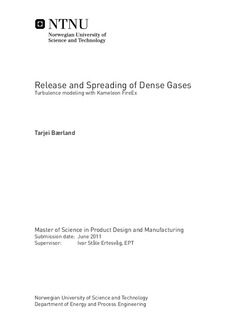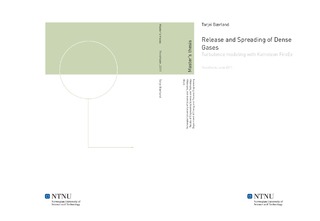| dc.description.abstract | A dense gas released into the atmosphere will have a flow development that can be described by a large range of physical scales and quantities. An instantaneous release will slump towards the ground unaffcted by the wind, before it is gradually and increasingly diluted by the turbulence in the surrounding flow. Therefore, when the gas is far from the release point, its movement is determined by that of the wind.The wind's turbulence characteristics varies with the atmospheric stability. An unstably stratified boundary layer will have turbulence production by negative density gradients, regardless of free stream velocity. A stable stratification, however, requires a wind velocity and shear to produce turbulence. The wind profile's velocity and turbulence characteristics can be described by similarity models, which may further be used as initial and boundary conditions in a turbulence model.The ke~model is a second order turbulence closure that has proved succesful in describing several turbulent flow scenarios. The version of the model used in the software package Kameleon FireEx has here been tested for dense gas releases, with a focus on far field development. Wind modeling is an area where the standard k-[epsilon] model is known to have problems, as it gives an unrealistic, inhomogoneous flow field.Three alterations to the k-[epsilon] model were tested in the work on this thesis. The first was a model constant varying with the local turbulence parameters, the second was a modification to the turbulence Schmidt number and, finally, a correctional production was added to the transport equations for k and [epsilon]. Of the three approaches, the last one gave the most encouraging results.There are still problems left regarding the k-[epsilon] model's handling of buoyancy-affected diffusivity. The Schmidt number modification dampens the dense gas' ability to diffuse also in the lateral directions, not only in the vertical, an effect that should be investigated further. | nb_NO |

